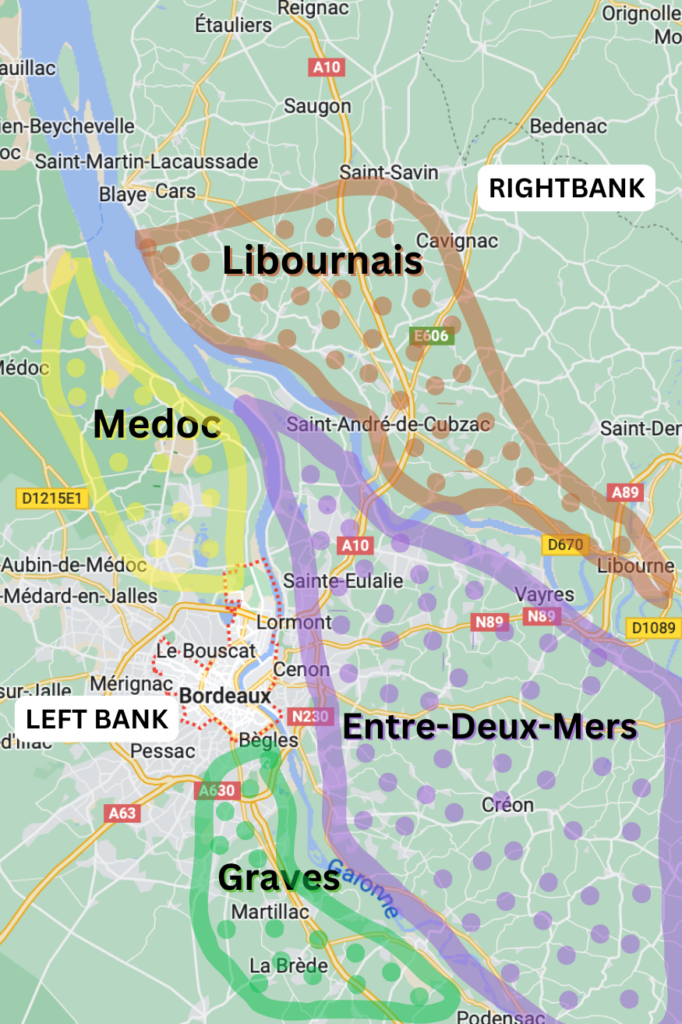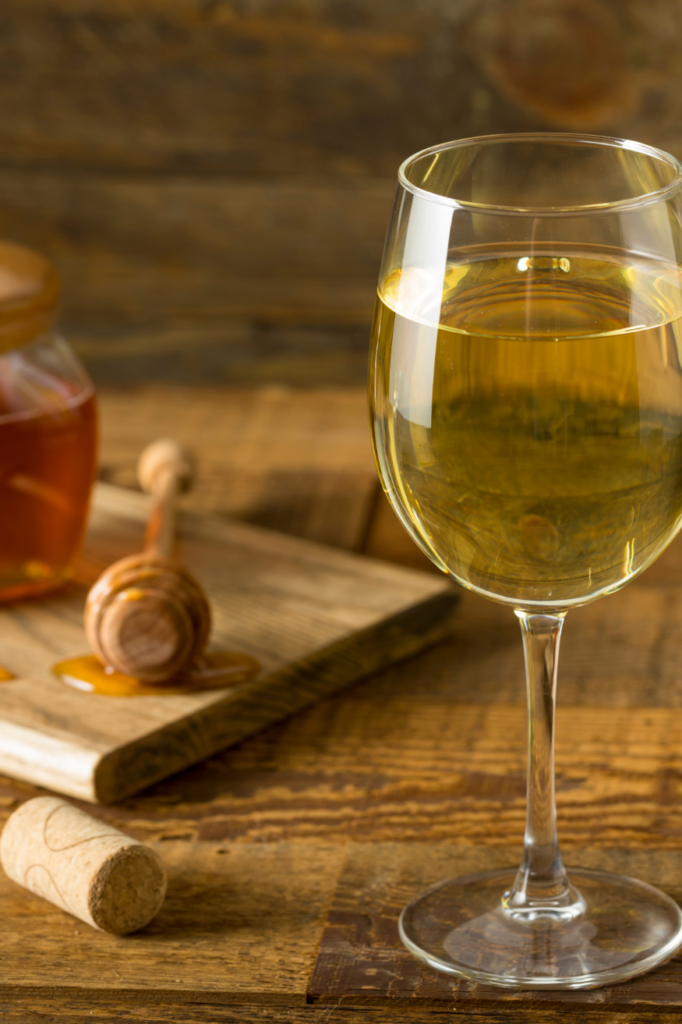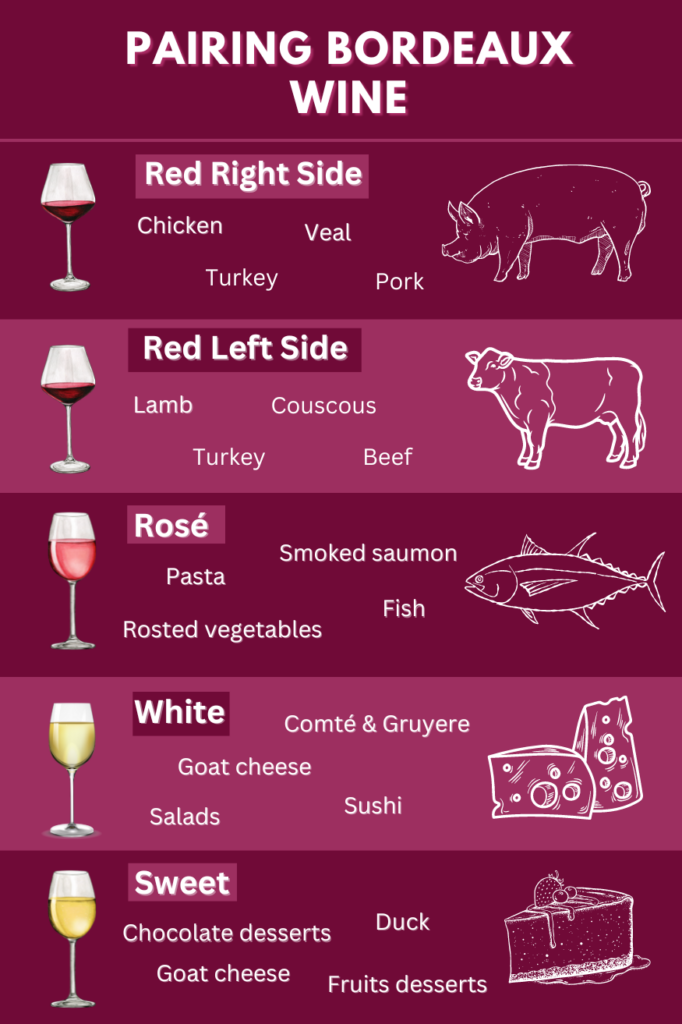When it comes to the world of wine, few places are as iconic and celebrated as the Bordeaux wine region. Known for its exceptional wines, rich history, and picturesque vineyards, Bordeaux holds a special place in the hearts of wine lovers. But what exactly makes Bordeaux wine so special? How can you navigate its complex offerings, and what food pairings best complement these world-class wines? In this comprehensive Bordeaux wine guide, we’ll answer these questions and delve into the secrets behind its unique grapes.
Why is Bordeaux Wine So Special?
Bordeaux is not just a region; it’s a global symbol of excellence in winemaking. The Bordeaux wine region is located in southwestern France and spans over 120,000 hectares, making it one of the largest wine-producing regions in the world. But it’s not just about the size—Bordeaux’s uniqueness lies in the perfect combination of terroir, tradition, and innovation.
The term “terroir” refers to the environmental factors that affect a crop’s growth, such as climate, soil, and topography. In Bordeaux, these conditions are ideal for growing grapes. The region enjoys a temperate maritime climate, influenced by the nearby Atlantic Ocean. This climate allows for long growing seasons, helping to produce grapes with complex flavours and balanced acidity. The variety of soils—from gravel to clay to limestone—also adds depth and character to the wines.
In addition to the favourable growing conditions, Bordeaux’s long winemaking tradition stretches back over 2,000 years, blending time-tested techniques with modern innovations. This combination ensures that every bottle of Bordeaux wine reflects both the region’s heritage and its pursuit of perfection.
Bordeaux Wine Map: Understanding the Region’s Diversity
One of the reasons Bordeaux wine is so fascinating is its diversity. The Bordeaux wine map is divided into two major areas: the Left Bank and the Right Bank, separated by the Gironde River. Each bank has distinct characteristics that produce different styles of wine.
- Left Bank: Known for its gravelly soils, this area is home to famous wine regions such as Médoc and Graves. The Left Bank predominantly produces wines made from Cabernet Sauvignon, which are known for their structure, tannins, and ageing potential. Here, you’ll find legendary estates like Château Margaux and Château Latour.
- Right Bank: The clay and limestone soils of the Right Bank, particularly in areas like Saint-Émilion and Pomerol, are ideal for Merlot-based wines. These wines are generally softer, fruitier, and more approachable in their youth compared to their Left Bank counterparts.
- Entre-Deux-Mers: This region, located between the two banks, is known for its crisp, refreshing white wines made from Sauvignon Blanc and Sémillon. It’s a great option for those looking to explore the lighter side of Bordeaux wines.

Understanding this Bordeaux wine map can help you select wines that suit your preferences, whether you’re in the mood for a powerful, tannic red or a lighter, more refreshing white.
What Are the 5 Grapes in Bordeaux?
Bordeaux wines are almost always blended, which means they’re made from a combination of different grape varieties. This blending process allows winemakers to create more balanced, complex wines. The five primary Bordeaux wine grapes are:
- Cabernet Sauvignon: This is the dominant grape on the Left Bank and is known for its bold flavors of blackcurrant, cedar, and tobacco. It adds structure and tannins to the blend, which is why Bordeaux wines age so well.
- Merlot: Predominant on the Right Bank, Merlot brings softer, fruitier flavors to the blend, such as plum and cherry. It’s more approachable when young and helps to round out the tannic structure of Cabernet Sauvignon.
- Cabernet Franc: This grape adds elegance and complexity with notes of raspberry, herbaceousness, and pepper. It is often used in smaller quantities but is important in adding layers to the wine.
- Petit Verdot: A small but powerful addition to Bordeaux blends, Petit Verdot contributes deep color, tannins, and spicy notes. It’s typically used in small amounts to add structure to the wine.
- Malbec: Although less commonly used today, Malbec adds a rich, earthy character to Bordeaux blends. It offers ripe dark fruit flavors and contributes to the wine’s color and body.
By understanding these key Bordeaux wine grapes, you’ll have a deeper appreciation for how the region’s winemakers create their world-renowned blends.
Is Bordeaux Wine Sweet?
When most people think of Bordeaux, they envision dry red wines. However, Bordeaux is also known for producing some of the world’s finest sweet wines. The most famous of these comes from the Sauternes region in the southern part of Bordeaux. Sauternes wines are made from a blend of Sémillon, Sauvignon Blanc, and Muscadelle grapes that have been affected by “noble rot,” a fungus that concentrates the sugars in the grapes, resulting in a lusciously sweet wine with flavors of honey, apricot, and tropical fruits.
While dry Bordeaux reds dominate the market, don’t overlook the sweet wines of Bordeaux, especially if you have a sweet tooth or enjoy dessert wines.

Pairing Food with Bordeaux Wine
Bordeaux wines are incredibly versatile when it comes to food pairing, thanks to their wide range of styles. Whether you’re enjoying a robust red or a crisp white, there’s a perfect food pairing to enhance your wine experience.
- Cabernet Sauvignon-based Bordeaux (Left Bank): These full-bodied reds pair wonderfully with rich, hearty dishes like grilled steaks, roast lamb, and aged cheeses. The tannins in the wine help cut through the fat in these foods, creating a balanced and harmonious pairing.
- Merlot-based Bordeaux (Right Bank): The softer, fruitier profile of Merlot pairs beautifully with roasted chicken, duck, and even pork. Its lower tannin levels make it a good match for less fatty meats.
- White Bordeaux: Sauvignon Blanc and Sémillon-based white Bordeaux wines are excellent with seafood, shellfish, and light salads. Their bright acidity and citrus notes complement the freshness of these dishes.
- Sauternes (Sweet Bordeaux): Sauternes is a perfect match for foie gras, blue cheese, and rich desserts like crème brûlée. The sweetness of the wine balances out the saltiness of these foods, creating a delightful contrast.

Now that you’ve got an idea of how to pair Bordeaux wines with food, why not take your experience to the next level? Our food and wine tours allow you to explore the Bordeaux wine region firsthand, offering tastings of different Bordeaux wines perfectly paired with local cuisine. It’s a must-do experience for any wine enthusiast looking to deepen their understanding and appreciation of this iconic region.
Final Thoughts
Bordeaux wine is special for many reasons—its rich history, diverse wine map, and the unique combination of Bordeaux wine grapes that make each bottle distinct. Whether you prefer a tannic, robust red or a sweet, honeyed Sauternes, there’s something in Bordeaux for every palate. By understanding the key components of Bordeaux wine and the perfect food pairings, you can elevate your wine-drinking experience and discover why this region remains at the heart of the wine world. After reading our Bordeaux wine guide you will be ready to explore the region!
So, are you ready to explore Bordeaux for yourself? Consider joining one of our exclusive food and wine tours to taste the best of what this world-renowned region has to offer!
